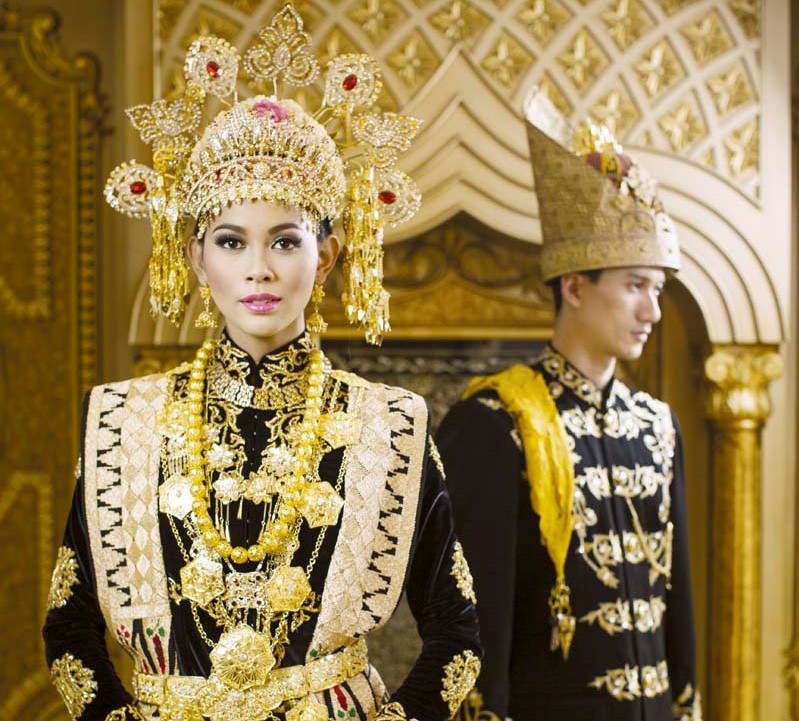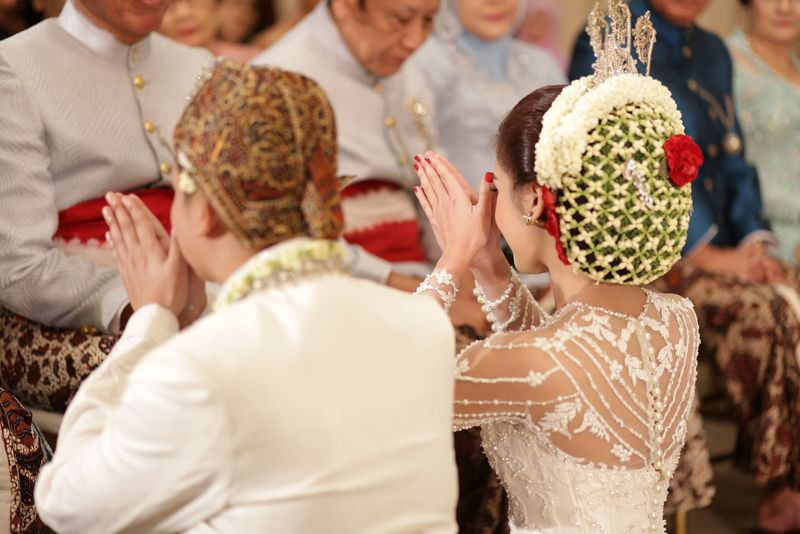 Indonesian jewelry as part of our heritage has actually been known and acknowledged for many centuries, not only for its unique design but also the quality. One can still witness the greatness of ancient gold craftsmanship at the National Museum. These days, this heritage is continuing to inspire many current jewelry designers in Indonesia. The richness of Indonesian culture is not only stored in traditional clothing, dances, or regional languages, but also through traditional jewelry. Just like traditional clothes that differ from one region to another, Indonesian traditional jewelry is also different from one another. Usually, this jewelry is used at traditional ceremonies or wedding moments. Through traditional jewelry, we can witness the expertise of our ancestors in making metal crafts, and this is one of the records of Indonesian civilization that we should not forget.
Indonesian jewelry as part of our heritage has actually been known and acknowledged for many centuries, not only for its unique design but also the quality. One can still witness the greatness of ancient gold craftsmanship at the National Museum. These days, this heritage is continuing to inspire many current jewelry designers in Indonesia. The richness of Indonesian culture is not only stored in traditional clothing, dances, or regional languages, but also through traditional jewelry. Just like traditional clothes that differ from one region to another, Indonesian traditional jewelry is also different from one another. Usually, this jewelry is used at traditional ceremonies or wedding moments. Through traditional jewelry, we can witness the expertise of our ancestors in making metal crafts, and this is one of the records of Indonesian civilization that we should not forget.
Indonesian Jewelry
When viewed from historical records, the ability of the ancestors of the Indonesian people to process metal has occurred since 1000 BC. Precisely during the Dong-Song Bronze Culture. It was only during 500 BC that the entry of Chinese and Indian influences into the archipelago made the metal crafts which were also the forerunners of jewelry change. Each region in Indonesia lives with its own culture. One of the cultural practices that are still often carried out is traditional ceremonies, including marriage ceremonies. Traditional clothes and jewelry are used at this time.
Not just an accessory, sometimes this jewelry is also the main object in traditional ceremonies. Because not infrequently, most traditional jewelry is hereditary objects that are sacred. For Indonesian brides, it’s incomplete to get married without typical Indonesian clothes, as well as the accessories used. Therefore, traditional jewelry has always been a mandatory item at the moment of a wedding. Not infrequently even if this traditional jewelry is then combined with modern clothing or modern hairdos to add to the perfection of bridal makeup.

Indonesian traditional headdresses | Source: Brillio.net
If you want to use traditional clothes and jewelry for your wedding, find someone who is an expert in these matters to help you choose and use the right jewelry and clothing. Because usually, at different moments, different types of jewelry or clothes must be used. Surely you don’t want to wear the wrong clothes and jewelry, do you?
Javanese Jewelry

Javanese Traditional Wedding Ceremony | Source: Google
For example, Javanese people are known as the most numerous people in Indonesia, even though they are spread throughout the country. Traditional jewelry typical of Central Java is generally made of metal or silver used on the head and hands. For example, cundhuk comb jewelry and mentul cundhuk complement the konde. Both of this jewelry you can find at the time of the wedding ceremony on the head of the bride.
Sumbanese Jewelry

Mamuli Sumba | Source: Pinterest
Culture in each region must have distinctive symbols that become pride, even become something that cannot be separated from these customs. One of them is the traditional jewelry worn by women in each region.
In Sumba, gold jewelry plays an important role in the Marapu, a traditional belief that is still practiced. So far, we have known jewelry from East Nusa Tenggara such as haikara (decorative comb), bula molik (crescent moon-shaped headdress), muti salak necklace, ivory bracelet, mamuli (earrings), and rings.
Anahida or muti salak is antique traditional beads with a beautiful orange color that are very famous in East Nusa Tenggara (NTT) Province, especially on Sumba Island. Until now, Anahida is an important element in Sumbanese culture and remains a favorite necklace for Sumbanese women. Not only in Sumba, but this Anahida or muti salak is also famous on the islands of Timor, Sabu, and Rote.
In Kaliuda Gallery, you can find various curated Indonesian traditional jewelry. You can browse our various antique collections from all over the world. Visit our gallery now.
